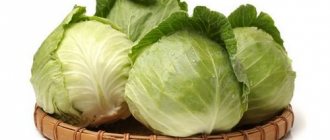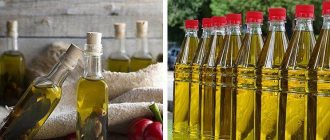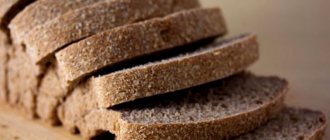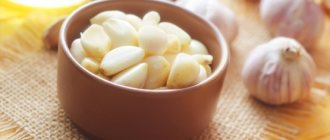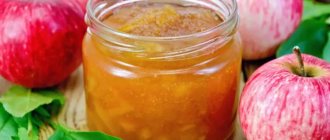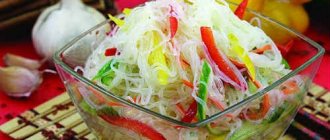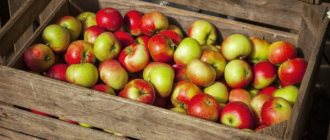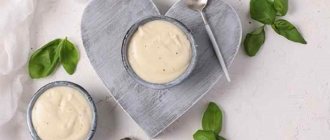Every year we manage to preserve apples with a fresh smell and taste in our apartment, not only for winter and spring, but also until the new harvest.
Good day! With you, Victor Dulin.
Today's story shows my intense efforts to preserve another bountiful harvest of apples for the winter.
You can save apples in an apartment Not an Adam's apple for the winter Wise parasites on fresh apples Extremely unusual storage of the apple harvest How to briefly store half a ton of apples in the countryside Apples are protected by electronics and steel Storing apples at home until the new harvest Home methods of storing apples
Features of storing apples
Fruits are divided by variety into:
- Winter. Golden, Idared, Jonathan, Renet, Antonovka. Retain commercial quality for 4-7 months. The optimal temperature is 0.
- Summer. They do not differ in keeping quality. Stored in disinfected, dried boxes made of natural materials for no more than 1.5-2 months. If the temperature rises above 12, they begin to quickly dry out, wrinkle, and lose their taste.
- Autumn. Spartak, Mackintosh. They will last 45-60 days, until April, if optimal conditions are created in basements, cellars, and on the balcony.
- Unripe. They are stored for several months. If you select acceptable varieties correctly, they will last until spring, remaining crispy.
You can tell if the apples are ripe by the first fruits that fall to the ground in September. If they fall in calm, warm weather at night, then it is time to harvest.
Autumn apple tree Asterisk
You should not use coniferous wood shavings; they have a persistent smell of resin, which apples will certainly absorb during long-term storage. You can make a good powder if you use buckwheat husks, but it’s not easy to get. You can also use oak or maple leaves, because they are very easy to find, but only such leaves should be healthy.
When the garden generously gives a good harvest of apples, housewives are faced with a burning question: how to preserve not only the fruits, but also the beneficial substances they contain, for the winter? In fact, everything is simple - you just need to know some of the subtleties that Passion shares with you today, on the eve of the Apple Savior. Let's start with the fact that not all varieties can be stored for a long time. Summer apples are completely unsuitable for this, and autumn apples will only last until the New Year without loss of vitamins and taste. But winter species, even in spring, will delight you with their aroma and the presence of nutrients.
They should be free of stains and black deposits. You can also line the drawers with bracken leaves. The substances it releases do a good job of protecting apples from rot. An excellent addition to harvest boxes would be peat chips and sphagnum moss growing in forests.
The moss must first be dried. Be sure to sift the peat crumbs through a fine metal sieve. The use of these natural antiseptics gives amazing results! Apples are stored for a very long time, maintaining their taste and excellent appearance. However, not all gardeners in the country have the opportunity to obtain these preservatives.
But a plant like lemon balm is not difficult to get. It occurs quite often. Using it as a powder also gives good results.
Washing in solution. Many gardeners advise rinsing them additionally before preparing apples for successful storage. To do this, you need to prepare an alcohol solution of bee propolis.
It's easy to get. The storage of apples lasts longer if they are not collected from too young trees, since young apple trees are more likely to get sick, and from the side of the crown that receives more sun.
Important factors for winter storage
For long-term storage, shelf-stable varieties are selected.
Requirements:
- Select fruits that have not been exposed to nitrogen or high temperatures during the ripening process. These factors negatively affect the shelf life and density of the product.
- Create a favorable climate in the basement, apartment, cellar.
- Collect in calm weather, placing in pre-prepared containers. The stalks should not be damaged.
- First place in a cool place for 15 days in order to identify damaged, diseased fruit.
- Select mature ones from unripe and overripe ones. Healthy apples should not have even the slightest damage or rot.
- Separate by variety, size. Place in the chosen method for preservation, wrapping each apple in cling film to prevent air from getting on them.
- Fill the empty space in the drawers with onion peels.
Variety
Late varieties are best stored. Moreover, by winter they will acquire a rich taste.
Antonovka
It is characterized by increased shelf life when kept in a barn or on a glazed balcony. First you need to quarantine, keeping it in a dark room for 2 weeks.
Bogatyr
Winter apples ripening at the end of September. Shelf life – 6-7 months.
Star
Will not change taste and color for up to 5-6 months.
Renet Simirenko
High-yielding, sweet variety, record holder for shelf life.
Northern synapse
The period of ripening of fruits with peel is the last days of October. Keeping quality – 5-6 months.
Pepin saffron
Shelf life – 210-220 days. Harvesting is the first days of September; the fruits ripen after harvesting in 2-3 months.
See also
How to properly and for how long you can store bee pollen at home
Renet Chernenko
Late variety. Will last for over 200 days, subject to storage rules.
Sinap Orlovsky
When picked, apples weighing 160 g are yellow-green. When left, it acquires a golden-yellow hue. Withstands frosts down to – 28 degrees. The harvest is harvested in October before the first frost. At first the fruit is hard and sour. When it sits for 2 months, it becomes tastier.
Welsey
A medium-winter-hardy early-fruiting variety with notes of pineapple. It is distinguished by long-term preservation and transportability. Apples last well in winter until February.
Veteran
Elite mature variety. It can be stored for a long time in a ventilated wooden container.
Memory of Michurin
Late winter fragrant beautiful apples. They will lie in a cool underground or basement until the end of spring. The main thing is to provide ventilation, avoid dampness, and place them in wooden or plastic containers or cardboard boxes. Sort by hand, do not wipe to avoid damaging the thin protective coating.
Idared
Winter version with strong skin and dense pulp. Will last until spring in boxes.
Migints
Dagestan medium-winter-hardy fruits with high yields and impeccable commercial qualities.
Rossoshansky striped
An early winter late-ripening variety with a shelf life of up to 150 days. It is better to dry or process compotes and juices into jam.
Jonathan
Apples have a long shelf life. They last until spring, maintaining impeccable taste.
Golden Delicious
When properly maintained, they can be stored for up to 250 days.
Amazing
Late variety. Keeping quality is long lasting. Although in severe winters it may freeze slightly if the requirements are not met.
Korea
Keeping quality is good. Store in the basement until June. As they ripen, they begin to taste like melon, remain juicy and not wrinkled.
Krasnoyarsk sweet
The pulp is juicy, the thickness of the peel is medium. For preservation in cold weather, dense fruits without blemishes are collected.
Zavetnoe
Stored in a pantry, on a ventilated windowsill.
You can put up to 15 kg, put it in the refrigerator (lower shelf), placing it in plastic bags.
Phoenix Altai
Stored for up to 120 days on racks in wooden containers. Optimal t – 0. The main thing is not to mix with other varieties, calibrate by size.
Zhivinka
Keeping quality - until January in ground storage conditions.
Girlfriend
Winter variety with thick skin, fresh fruit storage for up to 8 months. After collection, it can be kept in a box for 1 month. Next, transfer to the balcony at t -2+5 degrees.
Lada
Frost-resistant winter variety. It will last until spring. Will withstand low temperatures, although sudden changes should not be allowed.
a swan song
Winter round fruits can be stored in cool conditions for up to 0.5 years. But it is better to process it into compotes and jams.
Apples are protected by electronics and steel
To prevent mice and rats from encroaching on the harvest, this year for the first time, the protection of 50 boxes of apples was entrusted to electronics - “Grad A+1000 - pro”. However, hopes were not justified - the prefixes “+” and “pro” work well only against wise rats, while stupid mice do not pay attention to either the flashing red light or the loud and disgusting sounds and ultrasound for us and the rats.
Partial salvation is mousetraps of all types and night lighting with an economical LED lamp. However, where there was no direct light, the mice still had fun.
The mouse chaos forced me to take radical measures. The most reliable protection against all gnawing pests is to store 7 refrigerators in old cases, laid horizontally in the central aisle of the greenhouse - with the lid up. From the bottom and from two long sides, the steel bodies are wrapped in two layers of plastic film and covered with soil from greenhouse beds. On November 24, the refrigerator placed the next two-meter building on the free space in the aisle of the greenhouse and filled it with apples. Some of the steel containers were occupied by vermicompost already packaged in bags, ready to be sent to customers at any time of the year. But very conveniently, on the day of storage, orders were received from four retail outlets at once and 100 kg of apples were placed in the vacated refrigerator, instead of unloaded bags. I cover the entire inner surface of the apple cabinets with corrugated cardboard, then lay a layer one apple thick with the stem up and cover each such bookmark with cardboard again.
The depth of the case is 60 cm, so you get 8 tiers of securely and gently separated apples. On one “floor” you get up to 15 kg of harvest. I put winter varieties in the lower three tiers, and autumn varieties above. I also cover the bottom and top of the lid with 1-2 layers of cardboard, then with film and insulate it with a dozen 150-liter bags of leaves.
How to harvest correctly
Even the most resilient apples can quickly lose their marketable appearance if you ignore the deadlines and harvesting rules.
Main conditions:
- Carefully pluck from the branches, having previously prepared the container. Fruits that fall to the ground crack and can become infected with bacteria.
- It is better to collect by hand, starting from the bottom of the tree and gradually working your way up.
- Wear gloves when collecting to avoid damaging the top peel.
- Place the fruits in containers carefully, only with the stalks, one to one.
Sorting
The harvested healthy fruits are kept in a cool place for 48-72 hours to cool. After this time, some fruits will spoil, they are removed and used for winter preparations. Before winter storage, fruits of different sizes and varieties should not show even the slightest signs of rot.
See also
How and where to properly store kombucha at home and timing
How to preserve apples for the winter
First of all, you should take care of selecting apples of the appropriate varieties. Naturally, winter varieties will be stored much longer and better, which (with certain nuances) can easily retain their freshness in the home cellar, in the vegetable cellar, and even in the refrigerator.
Long-lasting apple varieties
If you want to enjoy fresh and tasty fruits even in winter, then you should think about planting and growing winter varieties of apples.
Winter apples have a rough, dense and slightly oily skin. This allows them to lie until spring without any loss of taste, aroma or shape. Summer apples have a thinner and more delicate peel, so the slightest coolness will cause them to spoil.
Today there are a lot of different winter apple varieties. Here are the most popular and persistent of them:
- Sinap Orlovsky . If certain storage recommendations are followed, it can last for an average of 250 days.
- Red Delicious. A fairly strong variety that can be stored for 200–220 days.
- Bogatyr . Such apples last on average 6–8 months.
- Renet Simirenko . One of the most durable varieties that will last you 250–270 days.
- Antey. Another good option with a shelf life of 240–260 days.
Apple storage conditions
If you create certain storage conditions for apples, the chance that they will last until the New Year or even until spring will increase significantly.
Optimal storage conditions:
- temperature indicators – should vary within 0…+4 degrees;
- the room where the fruits are stored should be dry and dark;
- The air humidity level should range from 85 to 90%.
If the room in which you store fruit is too humid, ventilate it periodically so that the fruit does not begin to rot.
The first step is to remove the crop from a room temperature area to a cooler area. And only after this the apples can be put away in the treasured cellar, where the temperature will be 0...+4 degrees. A sharp temperature change from warm to cold can cause the fruits to become covered with condensation and rot.
.
Rejection of low-quality apples
Any damage or signs of rotting will not increase the shelf life of apples and will lead to damage to the entire crop (even if only one diseased fruit ends up in the total mass), so before storing the fruits in the basement, you should sort them out and remove unusable material:
- First of all, let the fruits rest for 14 days in a cool place. During this time, even those defects that were invisible during collection will have time to appear.
- Next, remove from the total mass all the fruits that have any defects (stains, signs of rotting, traces of pests, mechanical defects, with a missing stalk, fruits that are too small or have an irregular shape).
- Rejected fruits should not be thrown away immediately. Some of them may well be suitable, for example, for drying dried fruits (remove the damaged parts of the apples first).
- The remaining healthy fruits should be sorted by variety and size and stored in a suitable place.
Storage methods
You can keep it in different places where optimal conditions correspond:
- Cellars. Must be equipped with ventilation. Treat the floor and walls with copper sulfate. This way the apples will remain fresh longer and will not lose their nutrients.
- If possible, place on racks in 1 layer, avoiding fruit contact.
- Earth. The main thing is to prevent overheating and freezing of the crop.
- Barn, covering the boxes on top with straw.
Large fruits are placed on the bottom of the container, small ones - on top.
Simple
It is easier to place the products in spacious wooden containers, with the stalks facing up, sprinkling dry sawdust on top.
Packaging paper
Paper packaging extends shelf life. Wrapping is a labor-intensive process, but it protects the crop well. You can use soft paper towels and napkins.
Materials containing printing ink and harmful additives are not acceptable.
Sprinkling and re-layering
Suitable natural bulk substances are sawdust, sand, ash, onion peels. Sand and ash are poured onto the bottom, apples are placed, and bulk material is placed on top.
Plastic bags
Cuts are made in the bags and apples of the same variety are placed, 2-3 kg each. The polyethylene is tied tightly. Normal temperature is -1...+1 degrees. You can put it in bags and leave them open for 48-72 hours. Next, tie it, make punctures, and place it on a shelf in the basement or cellar.
After 3 weeks, a gaseous environment is formed that protects the apples from rot and spoilage.
Cling film
The apples, one at a time, are tightly wrapped in film and put in the refrigerator.
How to store in the ground
Stages of creating a repository:
- Dig a trench measuring 60x45x45 cm.
- Cover the bottom with juniper, spruce or pine branches 3-4 days before harvesting.
- Place bags and polyethylene bags with fruits in one layer, at a distance of 25 cm from each other.
- Make several punctures with a needle.
- Fill the hole to the top, sprinkle with branches and dry leaves.
Carbon dioxide treatment
Fruits are treated with gas before storage. This prevents infection by pathogenic microorganisms and pests.
Ultraviolet treatment
The ultraviolet lamp kills bacteria and viruses. This increases shelf life and shelf life.
Preparation for storage
Preparation indirectly begins long before harvest.
It lies in the correct choice of varieties for planting, caring for growing fruits, which should also pursue the goal of increasing the keeping quality of apples. After all, infection of fruits by diseases and pests will significantly reduce their safety.
You should be aware that excessive fertilization with nitrogen and potassium fertilizers can cause premature rotting of fruits during storage.
The next stage of preparation is proper collection. It must take place strictly within the recommended time frame.
Varieties used for long-term storage are usually harvested two weeks before they are fully ripe. From a biological point of view, the keeping quality of apples is determined by their post-harvest ripening.
Post-harvest ripening of fruits activates respiration processes in fruit tissues, so ripening must take place with sufficient ventilation.
The fruit is harvested in dry weather, leaving the stalk in place to avoid the apple drying out and wilting.
Apples are carefully sorted after picking. Diseased, rotten or cracked fruits should not be allowed to be stored. This can cause rapid rotting of the entire batch containing a spoiled apple.
Spoiled apples are left at home, in the immediate vicinity, and are primarily consumed as food - compotes are prepared, used (after peeling) for processing (jams, preserves), and used as ingredients for culinary products (charlotte, apple pies).
Severely damaged fruits are disposed of or fed to animals.
How to improve keeping quality
To extend their shelf life, apples should not be washed or the natural waxy coating should be removed. It is better to cover the top with melted wax, although you will have to clean it off before use. If you decide to store unripe fruits, you should isolate them from each other to speed up ripening. Containers can be lubricated with glycerin. If kept in a refrigerator, it is good if there is a special compartment.
Apples will be stored longer in winter if they are treated with a 2% calcium chloride solution.
For what:
- Fill the basin with the solution.
- Place fruit for 1-2 minutes.
- Remove and dry with a clean cloth.
- Treat the peel with glycerin.
Preparation
In order for apples to be stored for a long time, take care of their timely collection and preparation. For long-term storage, choose suitable varieties that are characterized by keeping quality: “Jonathan”, “Olympic”, “Northern Sinap”, etc. Such fruits have a dense peel and retain nutrients, taste and benefits until the next harvest (5-8 months).
When wanting to preserve apples, it is important to know how and when to pick them. Harvest in the autumn, in dry, sunny weather. Pick apples intended for storage carefully so as not to damage the stem or the fruit itself. Start with the lowest branches, gradually moving towards the top of the tree. Carefully place the harvested crop into prepared containers.
Harvest apples in dry, sunny weather. Carefully pick the fruits from the branches, trying not to damage the stalk, and carefully place the fruits in a prepared container
Harvested apples must be kept in a cool room for 2 weeks to identify damaged or diseased fruits.
Then sort the crop. For storage, select only whole, healthy fruits without the slightest signs of damage or rot. Sort the apples by variety and size, and then start storing them for the winter in the chosen way.
Before storing apples, do not wash them or wipe off their natural waxy coating to maximize their shelf life.
Storage conditions
For long-term storage of fruits, you need to create optimal conditions:
- Maintain the ideal temperature when storing on the balcony, pantry, cellar.
- Provide ventilation by placing in containers with holes.
- Do not use iron containers for storage. As the temperature rises, apples will begin to release ethylene, which negatively affects their appearance and taste.
The shelf life of ripe apples depends entirely on the variety. The ideal temperature is +4 degrees, but not lower than -1. Humidity – 85%. If properly maintained, fruits will last in the refrigerator for a long time, up to 3-4 months.
Storing apples at home until the new harvest
As needed, I bring 2-3 boxes - each with 6 kg of the most fragrant apples of different varieties and put them on the balcony.
On the same balcony, moth-proof apples are stored in two 10-liter glass jars, dried in an exclusive cabinet equipped above the country fireplace. However, we don’t have time to eat half a ton of the annual harvest raw, even with my appetite for apples. Yes, and we flew by with potatoes - after all, 100 kg from vermiseptics is clearly not enough for us to reach our own young ones - without apple help. Of course, from early morning I have no apples - just a glass of structured water and then in small sips. Nevertheless, after an hour of exercise for the head - running my fingers across the keyboard and rustling the mouse - I happily and leisurely eat one or three, 200-70 gram apples of different colors and tastes, along with the seeds and core. I must admit that some of our apples, especially the carrion apples, but in general almost a third of the harvest, are far from ideal in appearance and there are several objective reasons for this:
- Sticky blades of grass and leaves
- bruises from impact,
- abrasions on branches,
- bites from birds,
- holes from wasps and hornets,
- hail stains,
- wormholes.
Selection and preparation of premises
To store apples, it is important to set the temperature and humidity levels. Premises requirements:
- ventilated;
- ventilated;
- warm, without sudden temperature fluctuations.
See also
How to properly and for how long you can store different types of cheese at home
Storage room
It is better to store winter apples in the winter in a cellar or basement. This is where the necessary temperature and humidity conditions are created.
To store apples in the cellar, it is prepared in advance. You need to do the following:
- whitewash the walls with a solution of lime or copper sulfate;
- Treat floors with 1% copper sulfate.
Store fruits:
- in wooden, plastic boxes;
- in boxes made of durable cardboard;
- in baskets made of wicker or synthetic material;
- on the racks.
Wash and disinfect containers and structures to prevent mold from forming.
To keep fruits as long as possible, use any of the considered methods of placing in containers.
The boxes should not touch each other, the floor or the wall, so as not to impede air circulation
Tip of the day
Place stickers on the container with information about the packaging date and variety. This way you will know which fruits to eat first and which ones to leave for later.
How to store in an apartment
The best option is wooden containers or racks.
Other places:
- insulated balcony;
- pantry;
- windowsill.
An apartment is not the best place for long-term storage of fruit. The maximum shelf life of fruits in such conditions is 8-12 weeks.
In the pantry
When storing in a pantry it is better:
- treat each apple with melted wax and glycerin;
- pack in paper or film;
- place in a wooden container.
In the glazed balcony
If the balcony is insulated, then fruits are stored well in thermal boxes:
- Take 2 cardboard boxes.
- Lay insulation between them.
- Cover the outside with foam plastic.
- Lay the wrapped apples in a layer of paper or newspaper.
- Cover the top with warm clothes.
In a refrigerator
Apples:
- packed in polyethylene bags, pre-wrapped in paper;
- placed in small cardboard boxes;
- placed in a special compartment of the refrigerator.
In the freezer
You can freeze fruits in bags.
Thaw gradually, placing it on the bottom shelf of the refrigerator for several hours.
Entirely
Dense, healthy whole fruit will last up to 1-2 weeks. Longer freezing is not recommended.
In slices
Sliced apples can be stored in the freezer for a maximum of 48 hours. To extend the period, you can put them in bags or small containers made of food-grade plastic.
As a puree
Apples, twisted and stored for the winter in sterilized jars, are stored until spring. Fruits pureed without cooking should be eaten immediately.
How and where to store apples at home
In a city apartment, fruits can be stored on a glazed balcony, loggia or in an unheated storage room. In private homes, apples are placed in the basement, attic, vestibule, dressing room or utility block. When choosing a room, evaluate the ability to maintain the recommended temperature levels, as well as the humidity level.
Fresh apples
If there are few apples and long-term storage is not planned, place the fruits in a box in several layers, but no more than 3. The fruits are stacked with the stems up, to avoid damage, cut the branches in half, but do not tear them off. The box can be covered with newspaper or placed in a prepared place as is.
Another option for simple storage is to place apples (no more than 4 kilograms) in a bag, make several holes in it, tie it and send it to a storage location. It is advisable not to place bags on the floor. Regularly check the condition of fruits in boxes and bags, immediately remove fruits with signs of rotting. If there is a lot of fruit, it is better to use other options.
Paper
Take regular newspaper, a napkin or other paper that is not too thick. Sheets from glossy magazines will not work; it is not advisable to use paper with colored ink. Wrap each apple completely in separate pieces of paper and place it in several layers in boxes, making sure that the stems are facing up. You can place a sheet of cardboard between layers of apples.
It is important that the paper does not unfold
Sawdust
Place a small layer (up to 3 cm) of sawdust on the bottom of the container, place the apples with their stems in one direction so that they do not touch each other, cover with sawdust, and place another layer of fruit. There should be a soft cushion of at least 3 cm between each layer.
Wooden, plastic or paper containers are suitable for any storage method. Make sure that the walls of the boxes do not touch the fruits and do not damage them. Do not place boxes too tightly; leave gaps between the walls and gaps between tiers of at least 2 cm.
Canned and dry apples
Summer varieties are more suitable for drying. Rinse the fruit thoroughly with running water, remove the core, and cut into 5 mm slices. Any drying is suitable - in the fresh air, in an electric dryer or in the oven. Place dryers in paper or cardboard boxes, do not compact them, ensure optimal air circulation.
On the forums you can find many recipes for canning sweet and sour apples. Whatever you choose, be sure to sterilize the jars and thoroughly clean the fruit from dirt and damage (rot, traces of pests). You can store the workpieces at room temperature in any convenient place.
Apple harvest
How long these fruits will be stored in a city apartment depends on the harvesting method. You can’t send “padants” for storage; they won’t last very long, not only on the balcony, but also in the cellar. All fruits to be stored should be collected directly from the trees, and the fruits should be removed with extreme caution. It is advisable to use various devices for this purpose, for example, ladders and stepladders. Apples that are planned to be stored should be collected using thin cotton gloves. This is necessary so that the waxy protective layer on the skin is not damaged.
Fruits need to be collected not in buckets or some kind of basins, but in special bags called fruit bags. If there is no such bag, you can replace it with ordinary soft plastic containers, which must first be covered with a piece of burlap. If any apple falls during the picking, it can no longer be sent to those intended for storage. Even if the fallen apple has the slightest damage, it will certainly infect all neighboring fruits with rot.
Sprinkling apples
Storing apples in dry fallen leaves
. To do this, put the apples in a box and sprinkle them with dry autumn leaves so that they create a layer between the fruits. Choose leaves that are undamaged, clean and dry.
Another good storage method is to sprinkle apples with wood ash mixed with sand.
in equal proportions.
Instead of foliage, you can use buckwheat husks, onion peels, husks, peat, shavings of deciduous trees, sawdust
.
Return to contents

